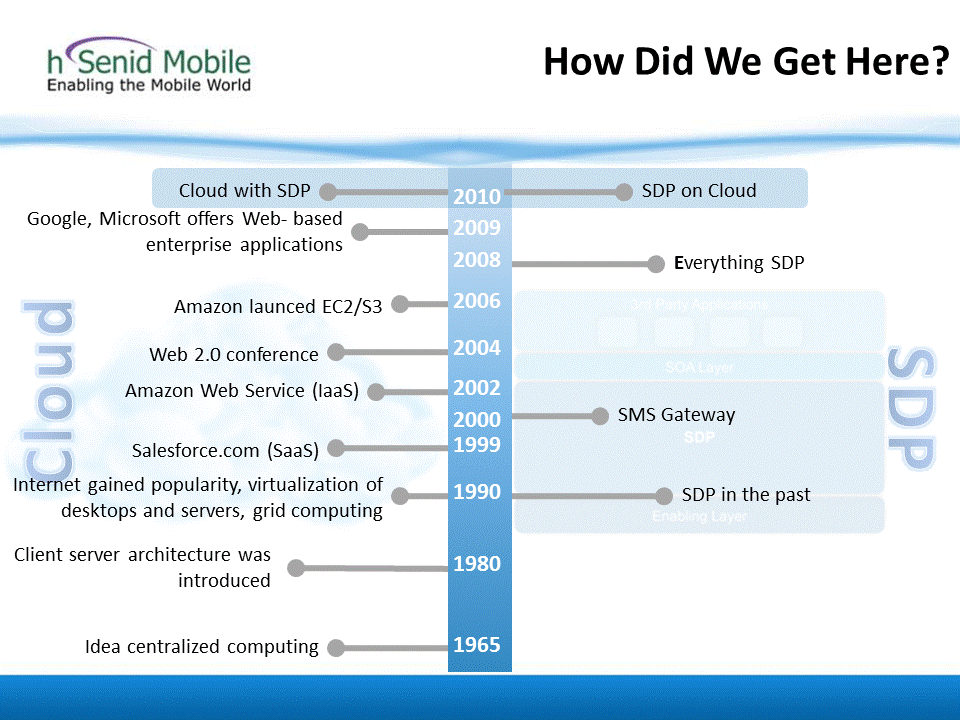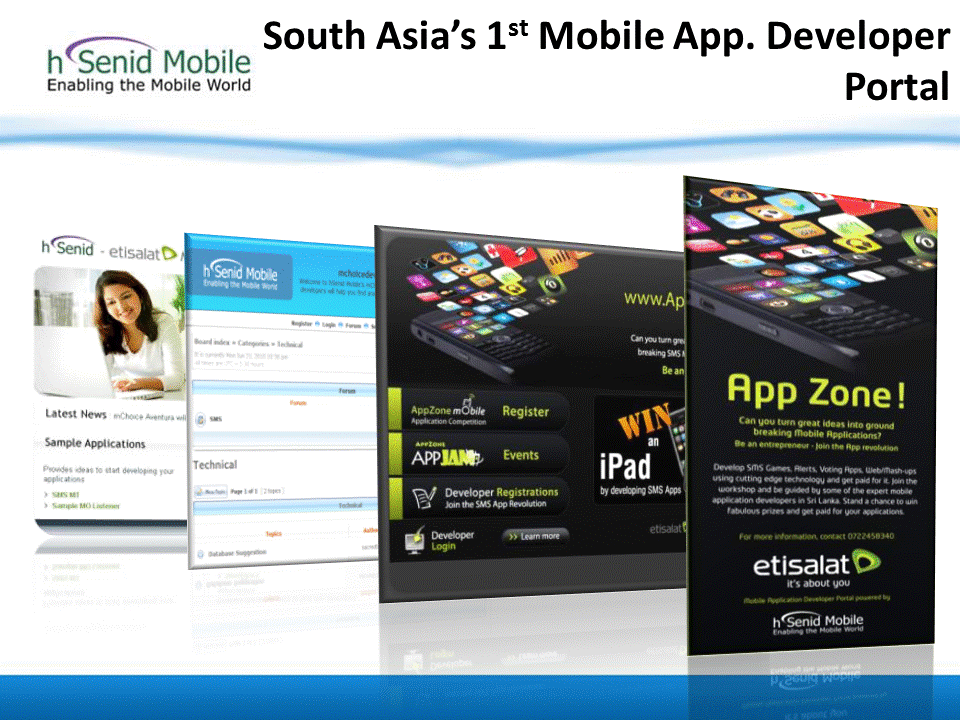hSenid (pronounced Senid, the h is silent) Mobile gave a workshop at SDP Asia on “SDP in the Cloud.” A summary of the material is available here. Though I was not able to attend, being at BBWF, I did have a chance to review the material. It provides an impartial review of the evolution of cloud computing and sets this against the evolution of SDP, shown in the diagram below. Some of the advantages in a cloud based SDP approach include:
- Lower risk by using resources (hardware, software and communications) on demand for innovative (unproven) business models and applications;
- Promote innovation in third party applications and services through using cloud based infrastructure;
- Avoid the need for a ‘heavy weight’ business case to justify new / innovative business models;
- Lower opex (integration and installation) and capex (hardware and software); and
- Lower management overheads on the platform.

In the presentation they reviewed how running the SDP in the cloud makes it much easier for both third parties as well as operators to work together in creating new applications and services.
The choice of SDP provider and cloud provider are two separate decisions, this is not a hosted solution. In the choice of SDP provider some of the capabilities to look for include: ability to start small and experiment, efficient architecture and implementation, clear migration strategy, well defined and complete processes, and scalability on demand. For the cloud provider they cover the decision criteria around public and / or private cloud, as an SDP is composed of a number of components it could be distributed across both; with security and availability being key criteria.
The workshop finished on a Case Study from Etisalat who launched South Asia’s first mobile app developer zone see below, their requirements included:
- Provide a simplified process of application development, deployment and commercialization;
- Stimulate third party applications and services; and
- Build an active and focused developer ecosystem.
The Etisalat Cloud SDP project started on 10th June, and by October there were 10k+ registered developers and 150 applications on the market. Though small in comparison to many, it presents a great example of the power of a cloud-based approach in starting small (minimize the risk), running in an environment that meets the needs of developers and operators, rapid launch and would appear to be working.
